Lecture 17: More Linked Lists
Overview
- Review: Coarse- and Fine-grained Lists
- Optimistic List
- Lazy List
Announcements
- Comments on proposals posted
- see shared Google drive
- please consider/respond to comments
-
forthcoming lab/hw assignments are optional
- can be submitted by end of finals week
- lowest grades dropped
- Quizzes weeks of 4/26, 5/3, 5/10, 5/17
- no comprehensive exam
- Final project steps
- Proof of concept due 5/7
- Short video due 5/19
- Final submission due 5/28
Last Time
A Set of elements:
- store a collection of distinct elements
-
addan element- no effect if element already there
-
removean element- no effect if not present
- check if set
containsan element
An Interface
public interface SimpleSet<T> {
/*
* Add an element to the SimpleSet. Returns true if the element
* was not already in the set.
*/
boolean add(T x);
/*
* Remove an element from the SimpleSet. Returns true if the
* element was previously in the set.
*/
boolean remove(T x);
/*
* Test if a given element is contained in the set.
*/
boolean contains(T x);
}
Coarse-grained Locking
One lock for whole data structure
For any operation:
- Lock entire list
- Perform operation
- Unlock list
Coarse-grained Insertion
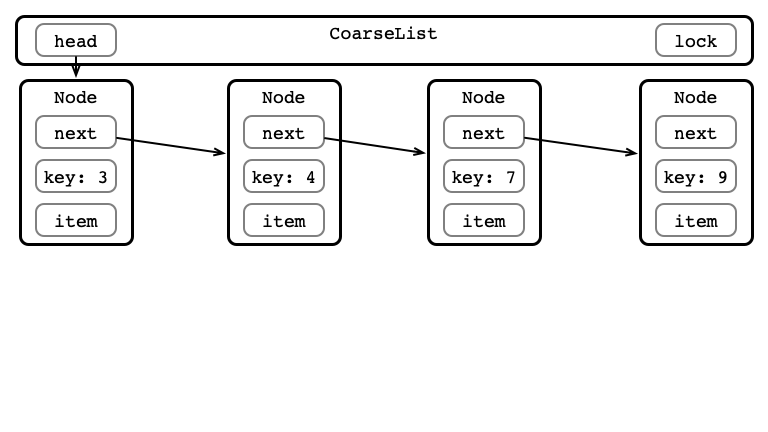
Step 1: Acquire Lock
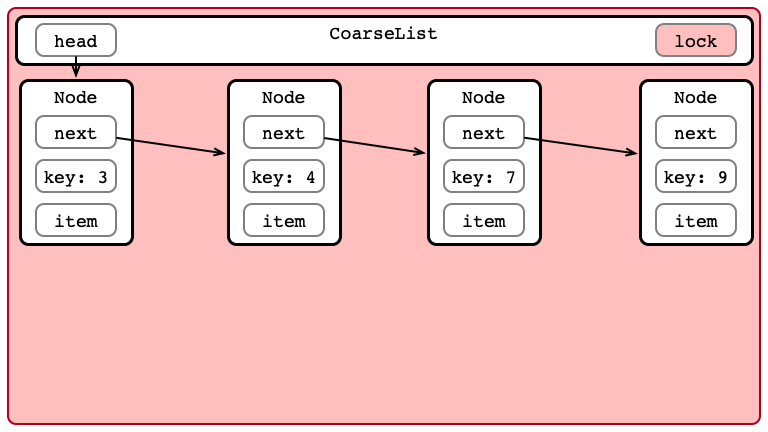
Step 2: Iterate to Find Location
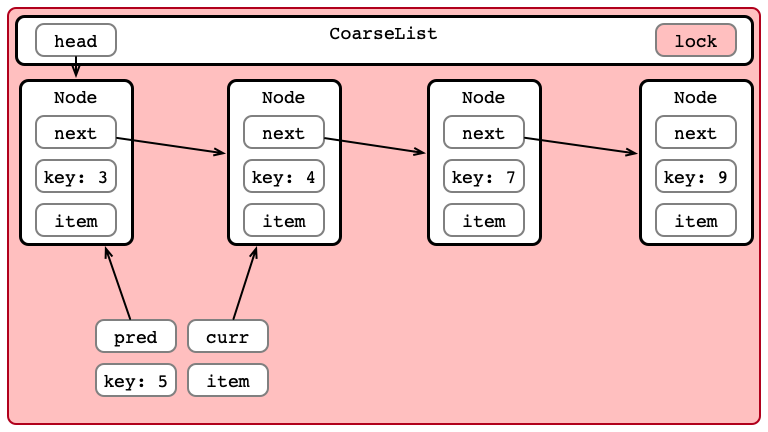
Step 2: Iterate to Find Location
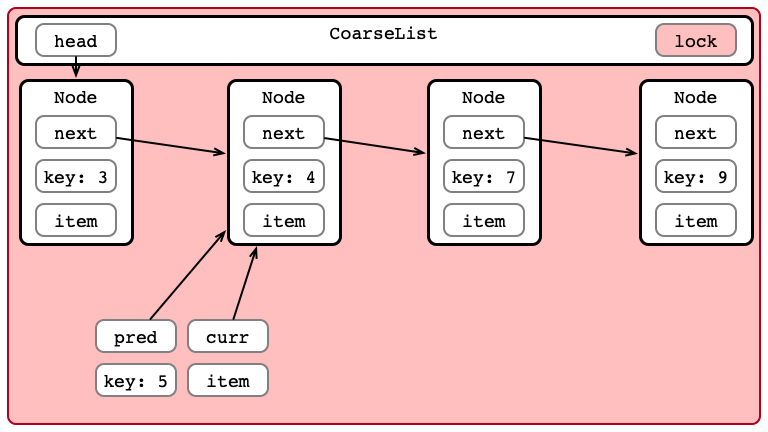
Step 2: Iterate to Find Location
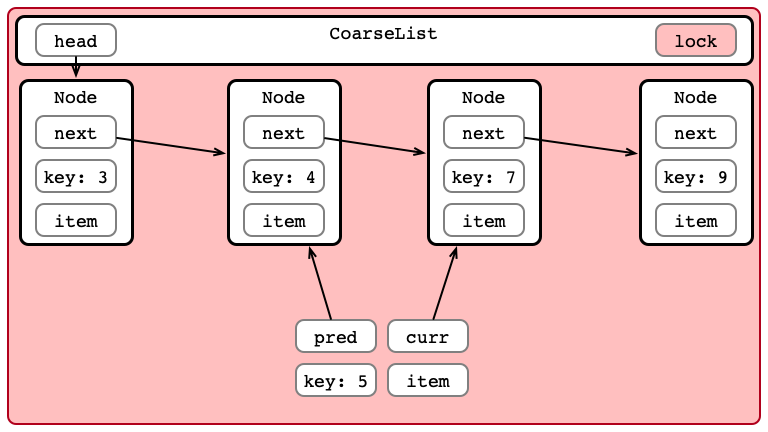
Step 3: Insert Item
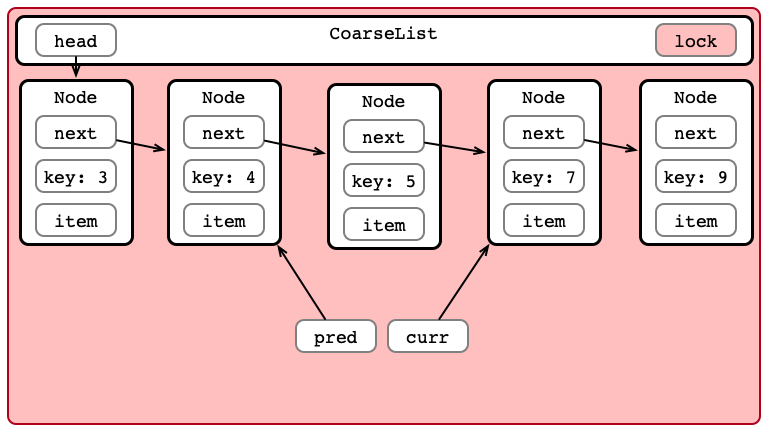
Step 4: Unlock List
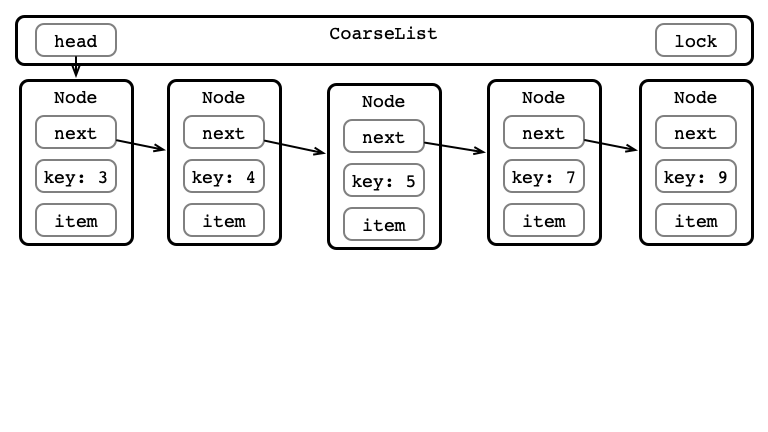
Coarse-grained Appraisal
Advantages:
- Easy to reason about
- Easy to implement
Disadvantages:
- No parallelism
- All operations are blocking
Fine-grained Locking
One lock per node
For any operation:
- Lock head and its next
- Hand-over-hand locking while searching
- always hold at least one lock
- Perform operation
- Release locks
A Fine-grained Insertion
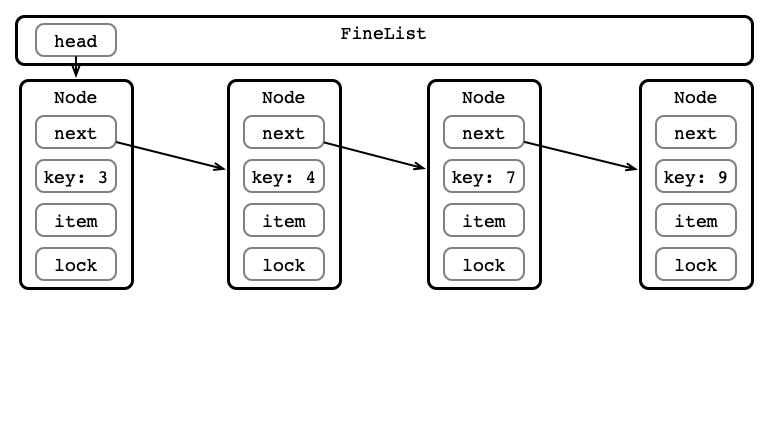
Step 1: Lock Initial Nodes
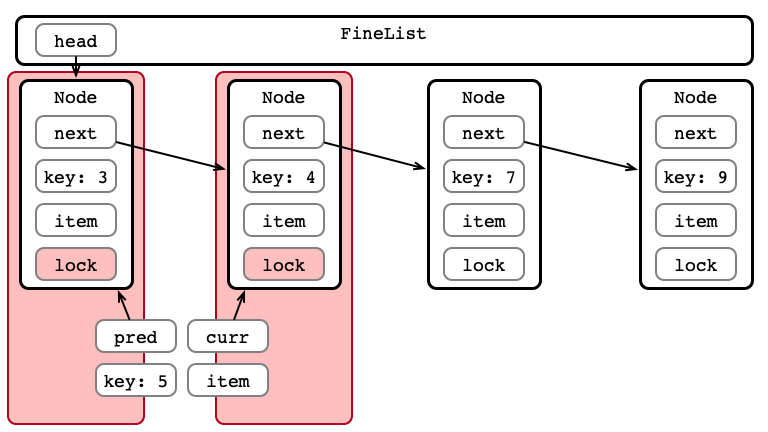
Step 2: Hand-over-hand Locking

Step 2: Hand-over-hand Locking
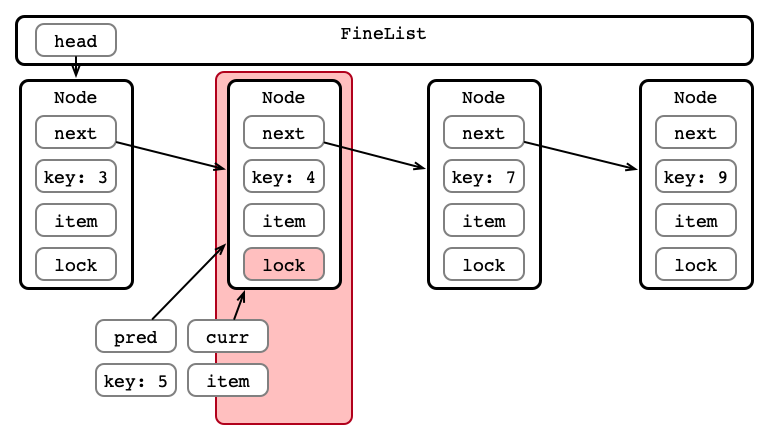
Step 2: Hand-over-hand Locking
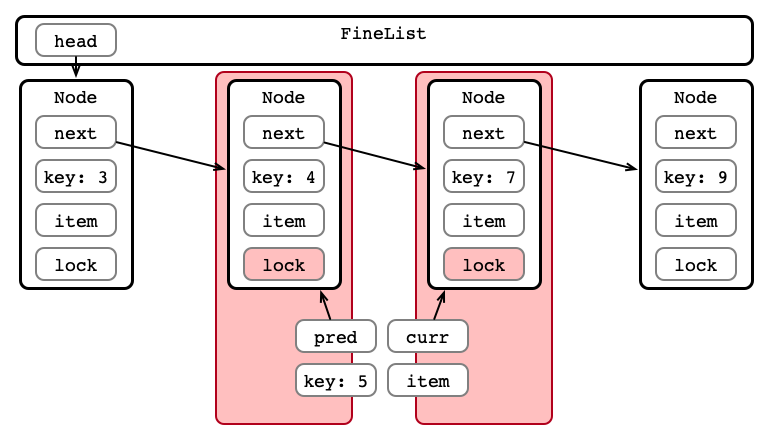
Step 3: Perform Insertion
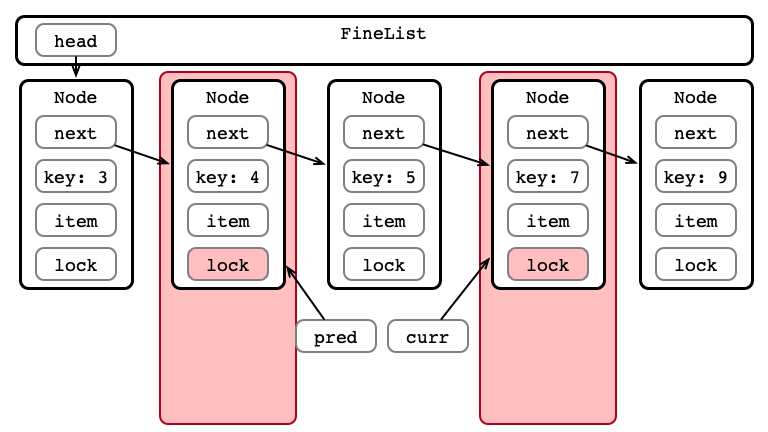
Step 4: Unlock Nodes
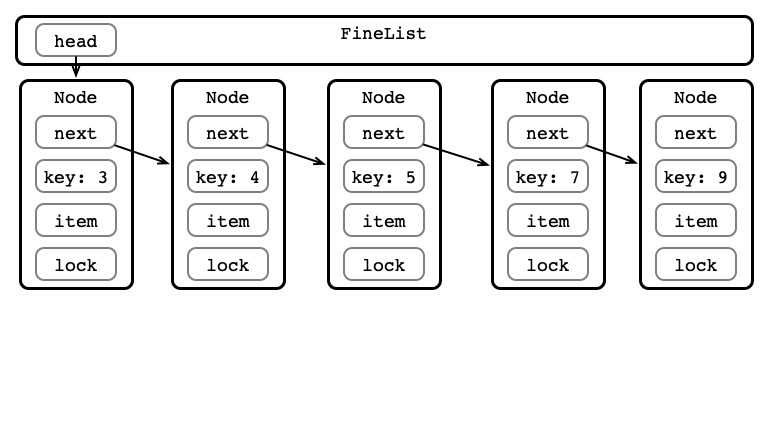
An Advantage: Parallel Access
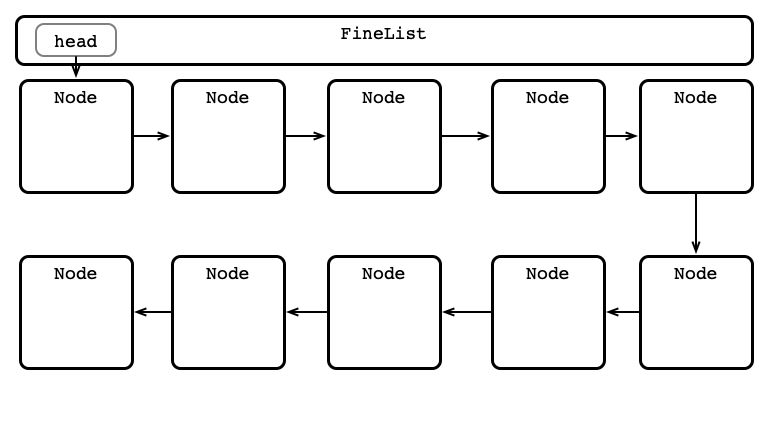
An Advantage: Parallel Access
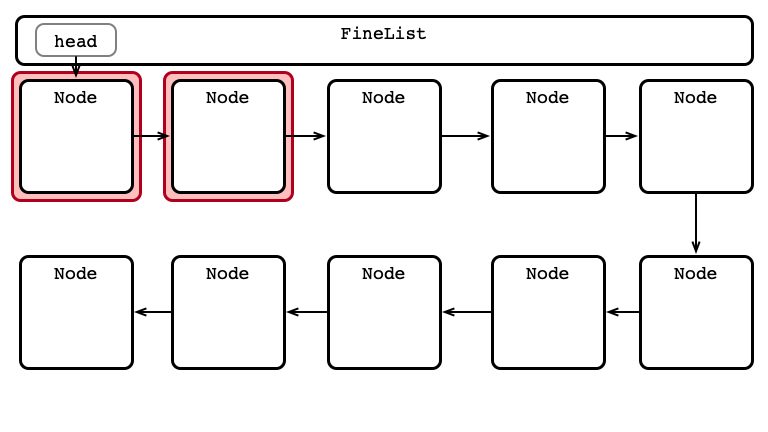
An Advantage: Parallel Access
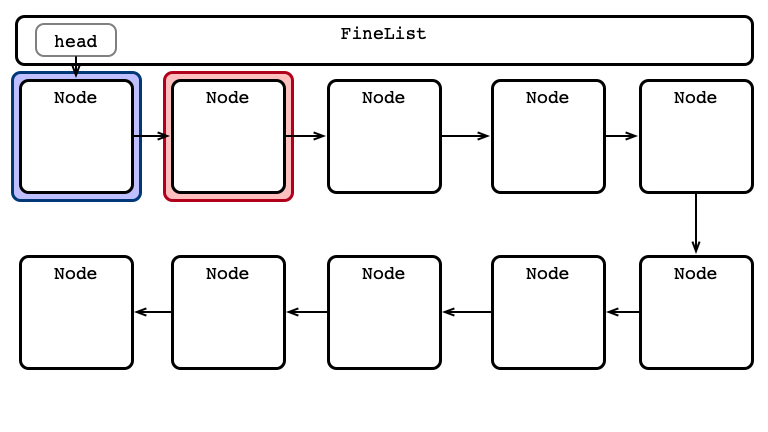
An Advantage: Parallel Access
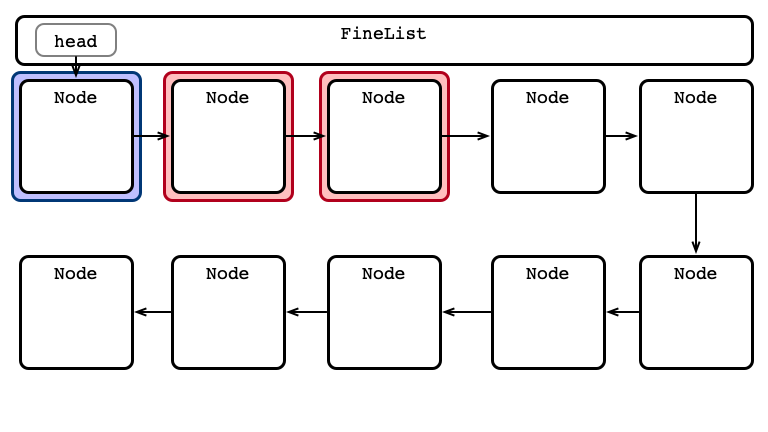
An Advantage: Parallel Access
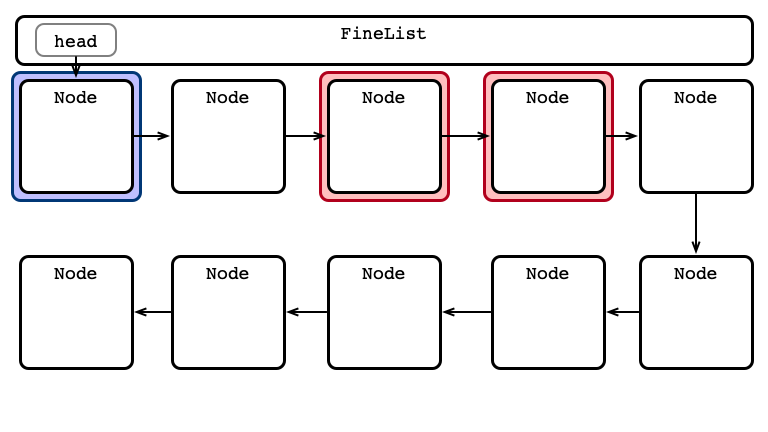
An Advantage: Parallel Access
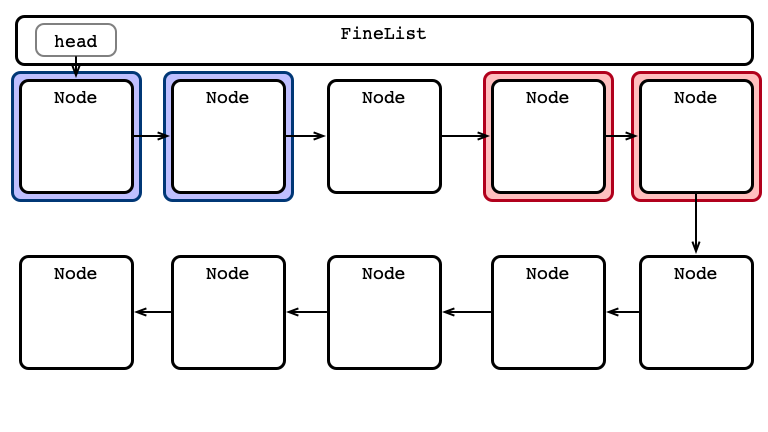
An Advantage: Parallel Access
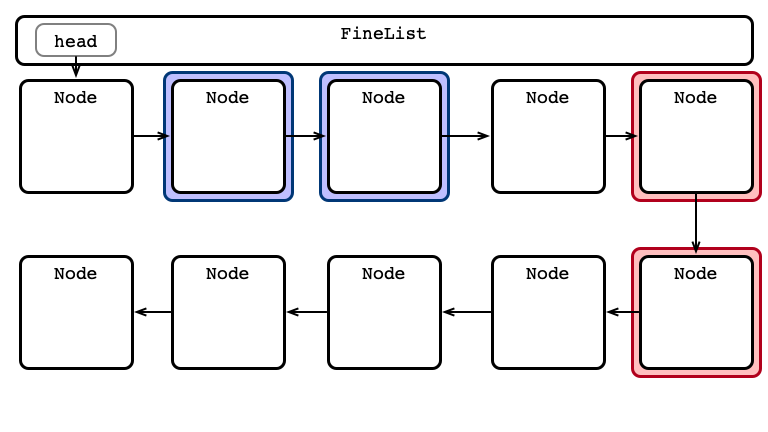
An Advantage: Parallel Access
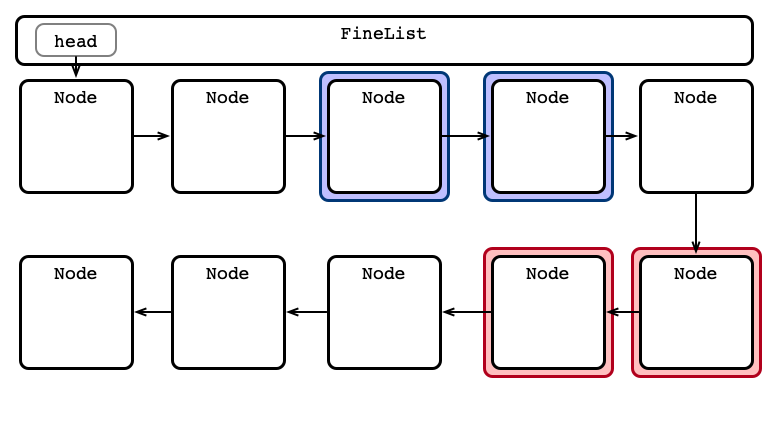
An Advantage: Parallel Access
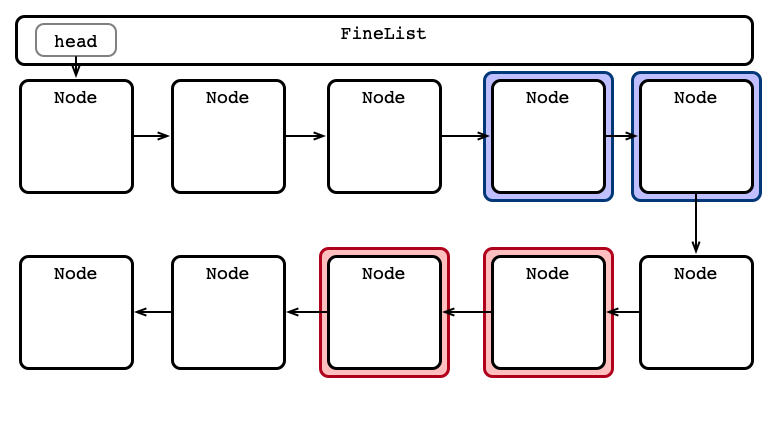
An Advantage: Parallel Access
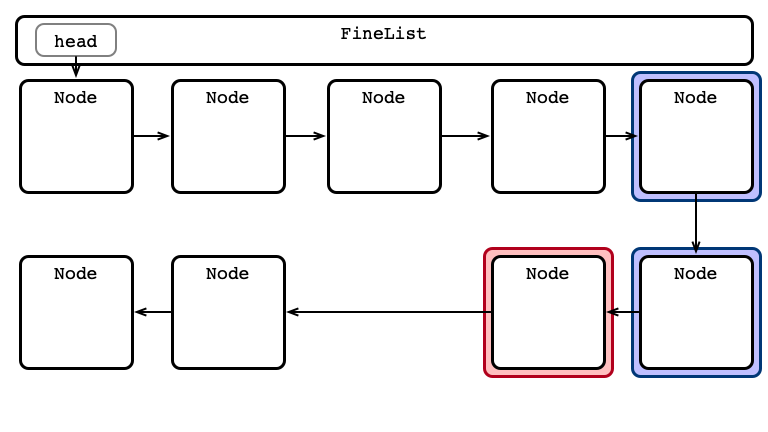
An Advantage: Parallel Access
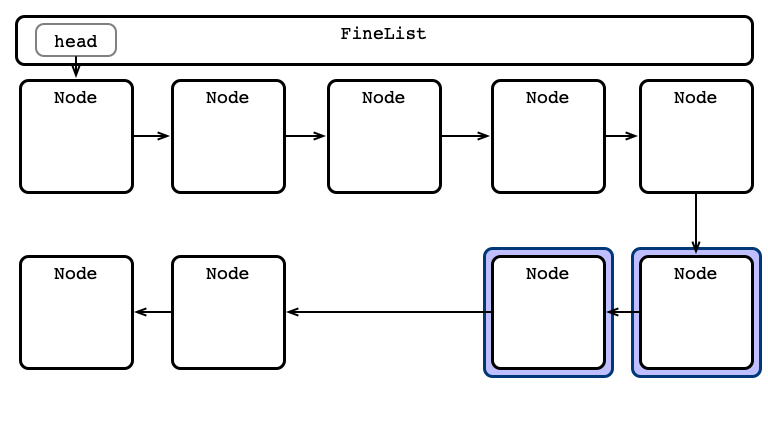
An Advantage: Parallel Access
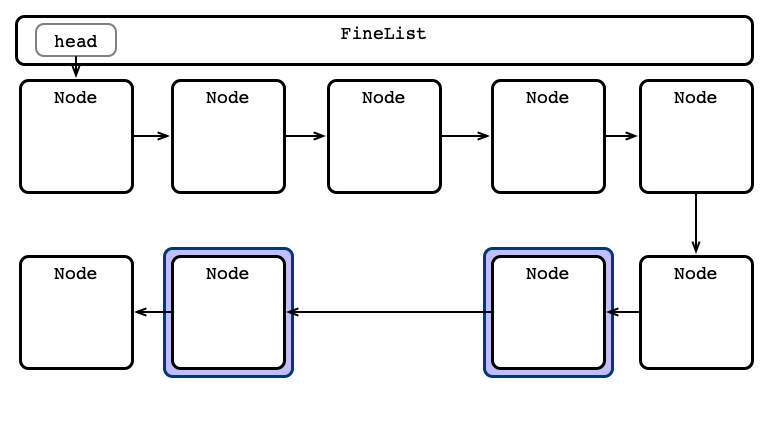
Fine-grained Appraisal
Advantages:
- Parallel access
- Reasonably simple implementation
Disadvantages:
- More locking overhead
- can be much slower than coarse-grained
- All operations are blocking
Optimistic Synchronization
Fine-grained wastes resources locking
- Nodes are locked when traversed
- Locked even if not modified!
A better procedure?
- Traverse without locking
- Lock relevant nodes
- Perform operation
- Unlock nodes
A Better Way?
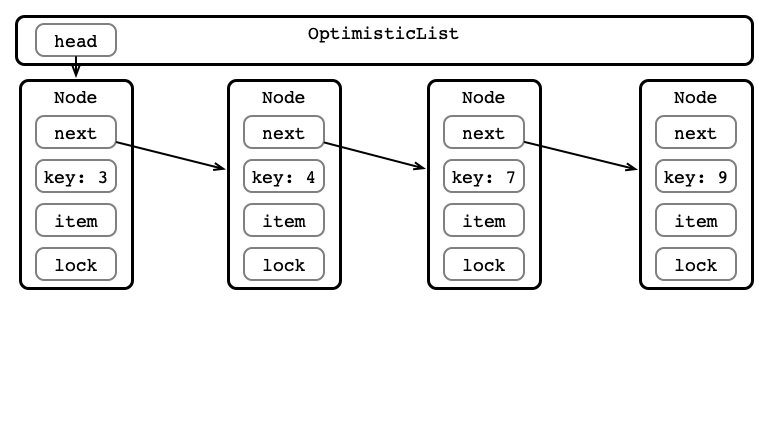
A Better Way?
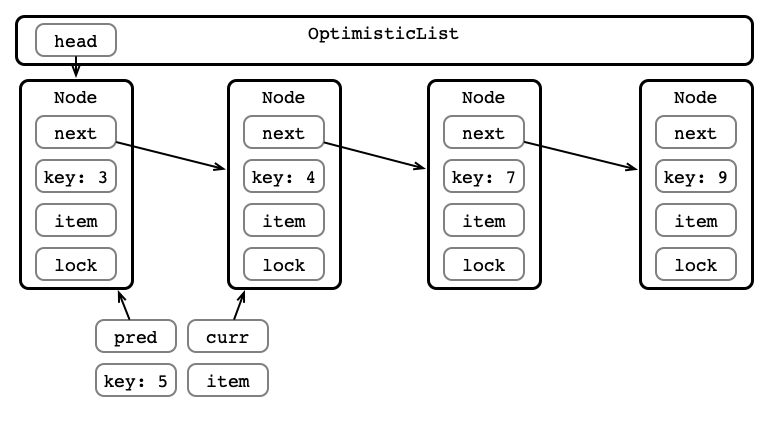
A Better Way?
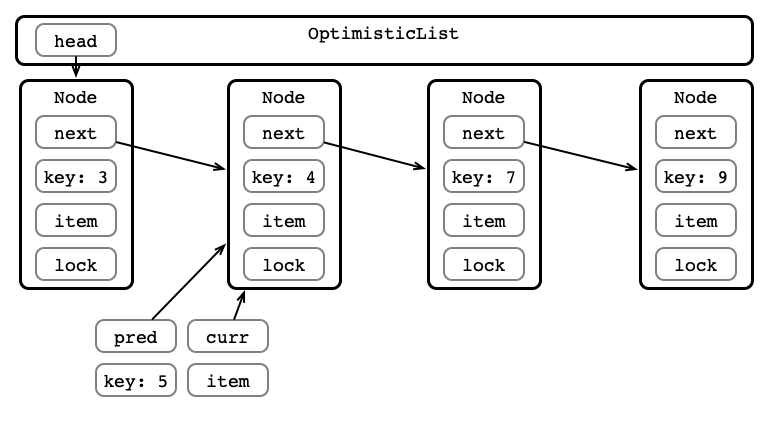
A Better Way?
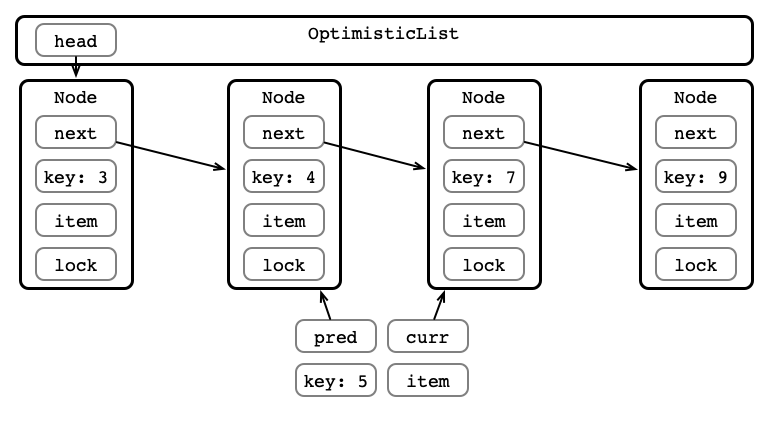
A Better Way?
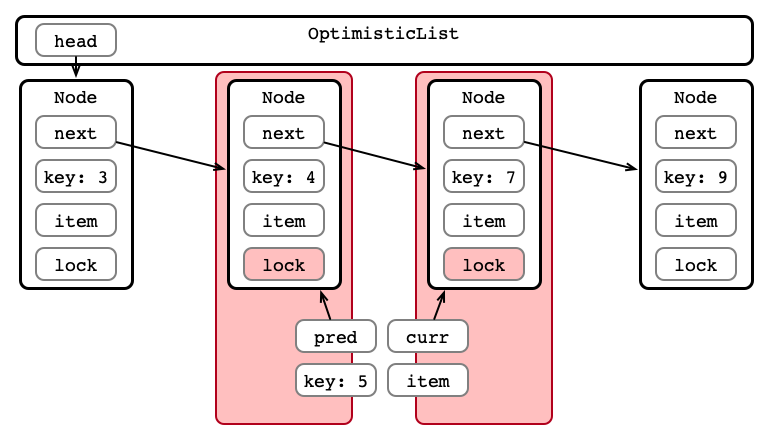
A Better Way?
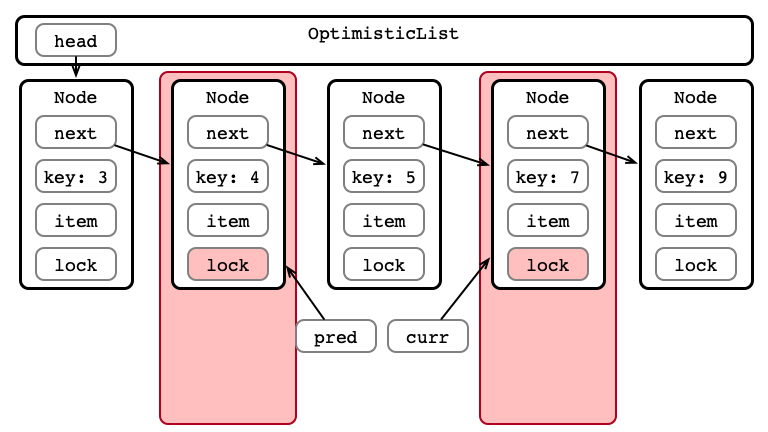
What Could Go Wrong?
An Issue!
Between traversing and locking
- Another thread modifies the list
- Now locked nodes aren’t the right nodes!
An Issue, Illustrated

An Issue, Illustrated
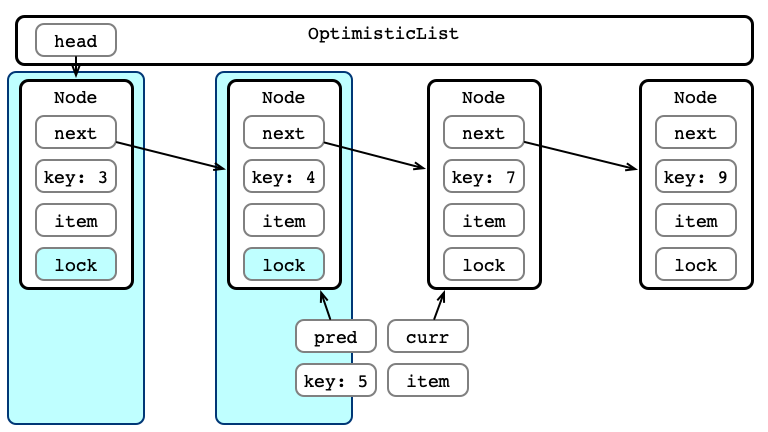
An Issue, Illustrated
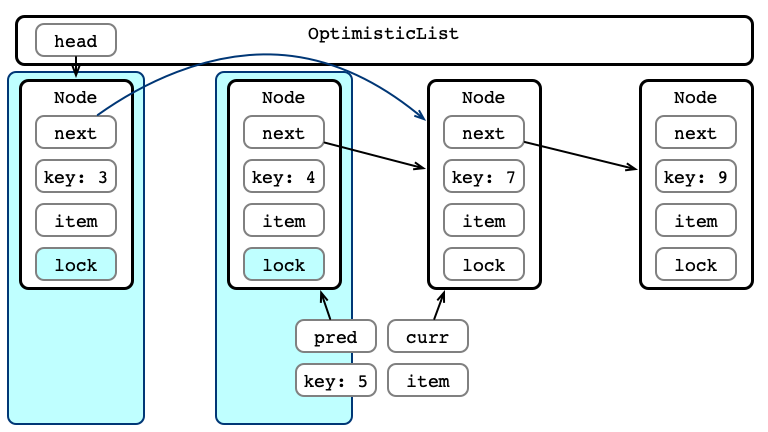
An Issue, Illustrated
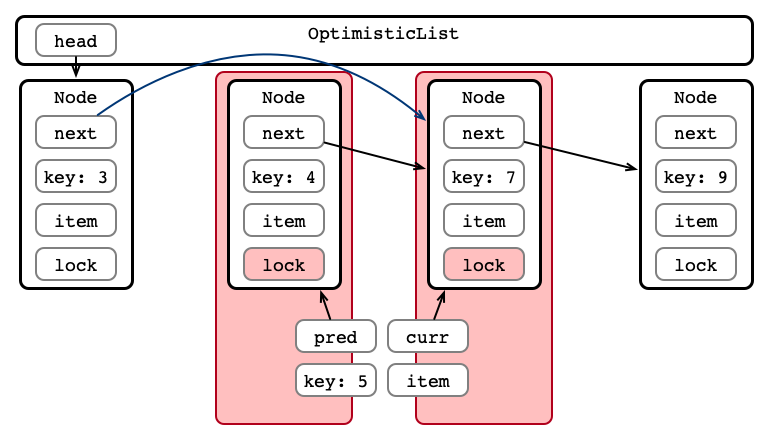
An Issue, Illustrated
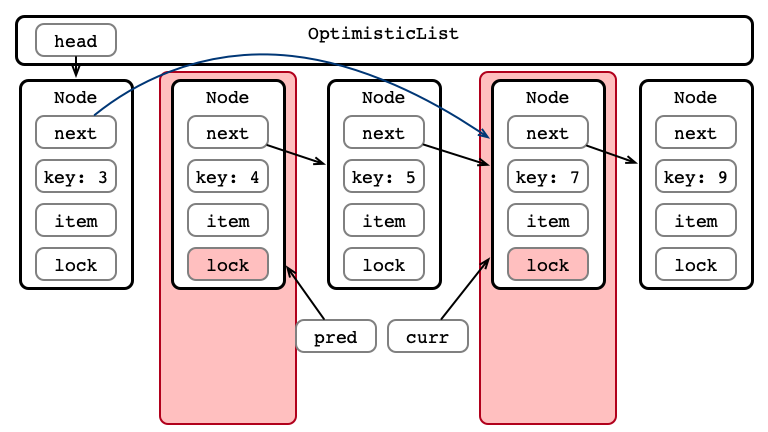
An Issue, Illustrated
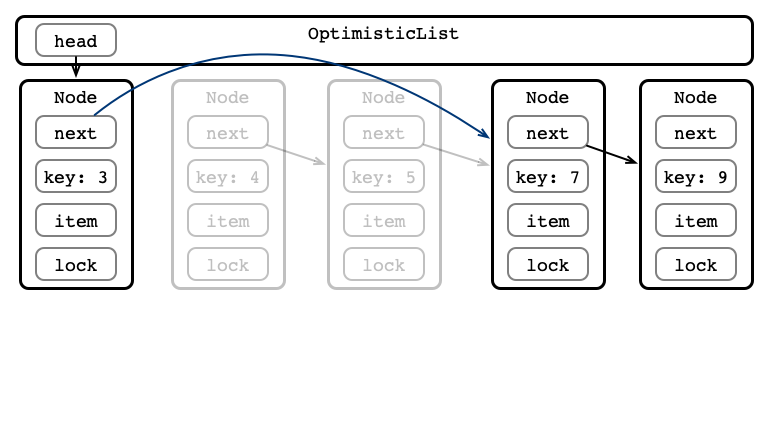
How can we Address this Issue?
Optimistic Synchronization, Validated
- Traverse without locking
- Lock relevant nodes
-
Validate list
- if validation fails, go back to Step 1
- Perform operation
- Unlock nodes
How do we Validate?
After locking, ensure that:
-
predis reachable fromhead -
currispred’s successor
If these conditions aren’t met:
- Start over!
Optimistic Insertion

Step 1: Traverse the List

Step 1: Traverse the List

Step 1: Traverse the List

Step 2: Acquire Locks

Step 3: Validate List - Traverse
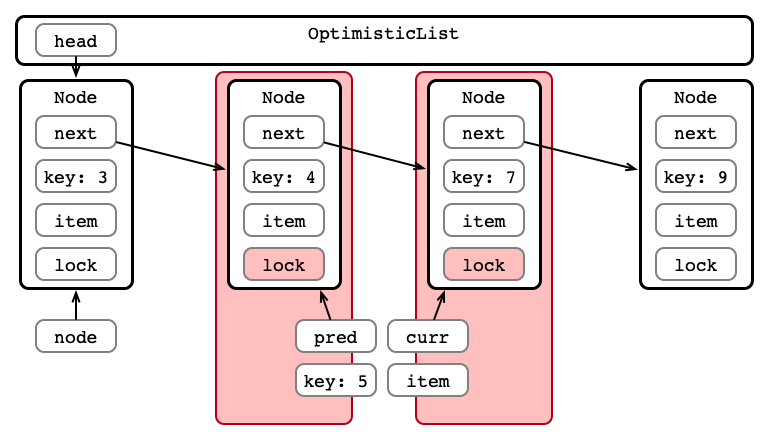
Step 3: Validate List - pred Reachable?
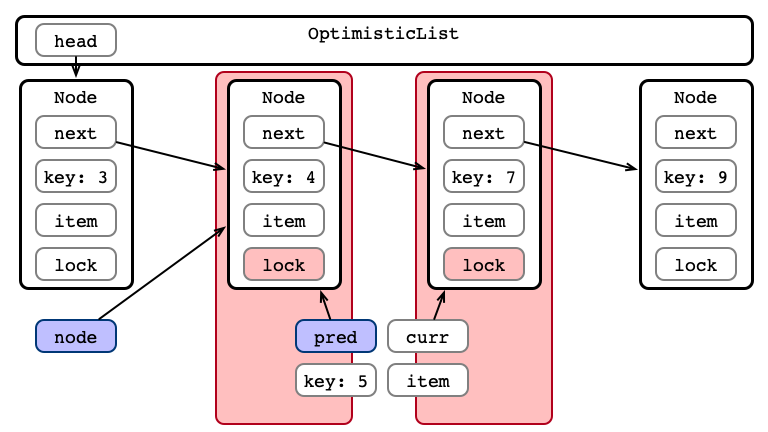
Step 3: Validate List - Is curr next?
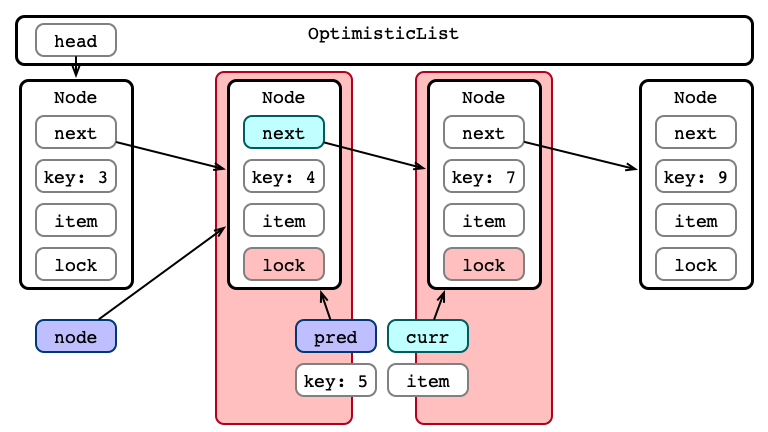
Step 4: Perform Insertion

Step 5: Release Locks
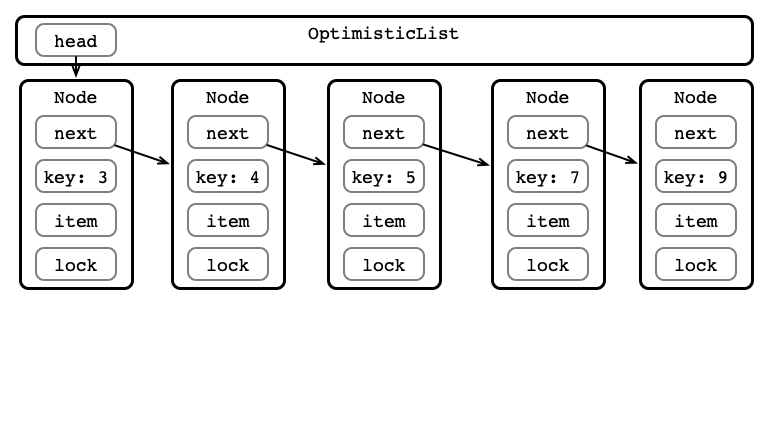
Implementing Validation
private boolean validate (Node pred, Node curr) {
Node node = head;
while (node.key <= pred.key) {
if (node == pred) {
return pred.next == curr;
}
node = node.next;
}
return false;
}
Question
Under what conditions might optimistic synchronization be fast/slow?
Testing Optimistic Synchronization
Optimistic Appraisal
Advantages:
- Less locking than fine-grained
- More opportunities for parallelism than coarse-grained
Disadvantages:
- Validation could fail
- Not starvation-free
- even if locks are starvation-free
So Far
All operations have been blocking
- Each method call locks a portion of the data structre
- Method calls lock out other calls
- True even for
contains()calls- doesn’t modify the data structure
Observation
Operations are complicated because they consist of several steps
- hard to reason about when the operation appears to take place
- coarse/fine-grained synchronization stop other threads from seeing operations “in progress”
- optimistic synchronization may encounter “in progress” operations before locking
- validation required
Lazy Synchronization
-
Mark a node before physical removal
- marked nodes are logically removed, still physically present
- Only marked nodes are ever removed
Validation simplified:
- Just check if nodes are marked
- No need to traverse whole list!
Lazy Operation
- Traverse without locking
- Lock relevant nodes
- Validate list
- check nodes are
- not marked
- correct relationship
- if validation fails, go back to Step 1
- check nodes are
- Perform operation
- for removal, mark node first
- Unlock nodes
Lazy Removal Illustrated
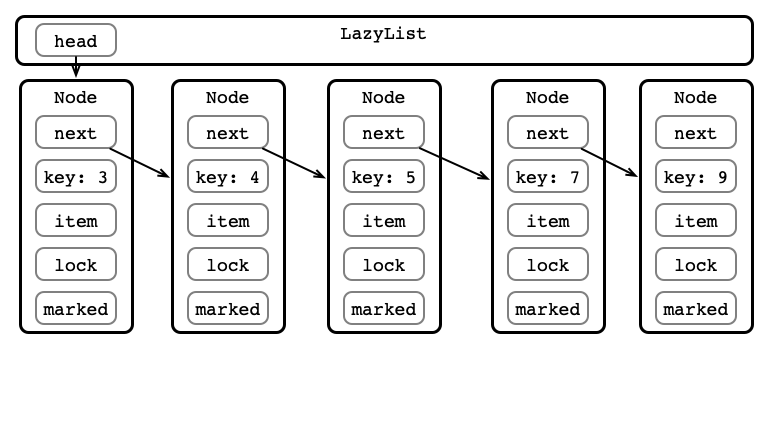
Step 1: Traverse List
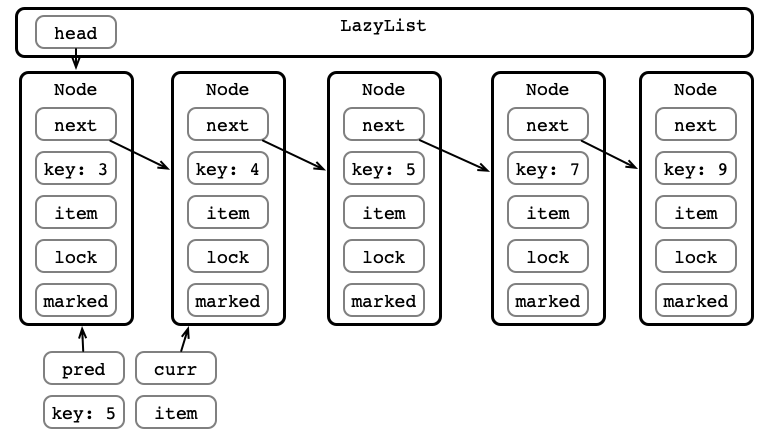
Step 1: Traverse List
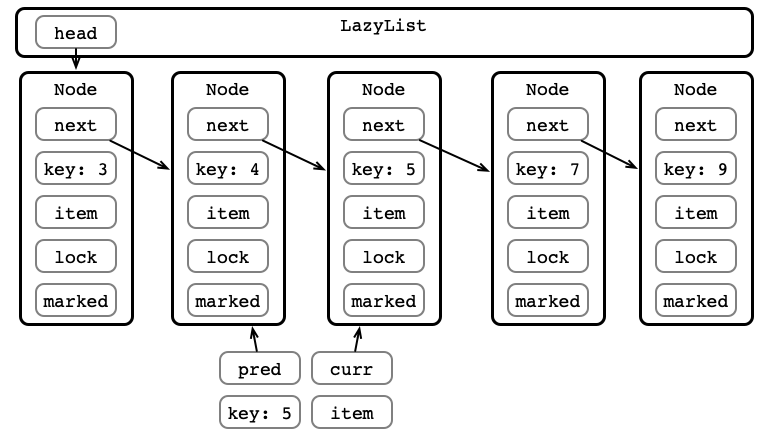
Step 2: Lock Nodes
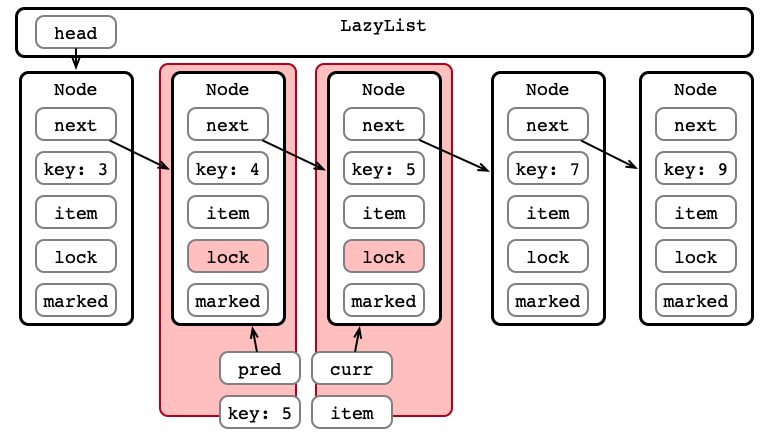
Step 3: Validate pred.next == curr?
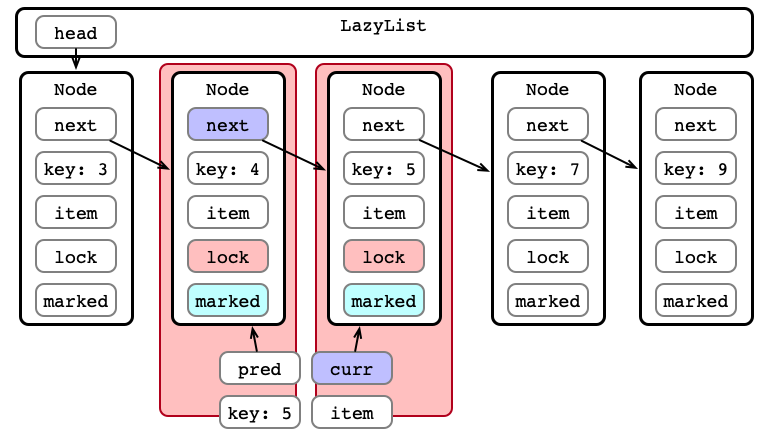
Step 3: Validate not marked?

Step 4a: Perform Logical Removal
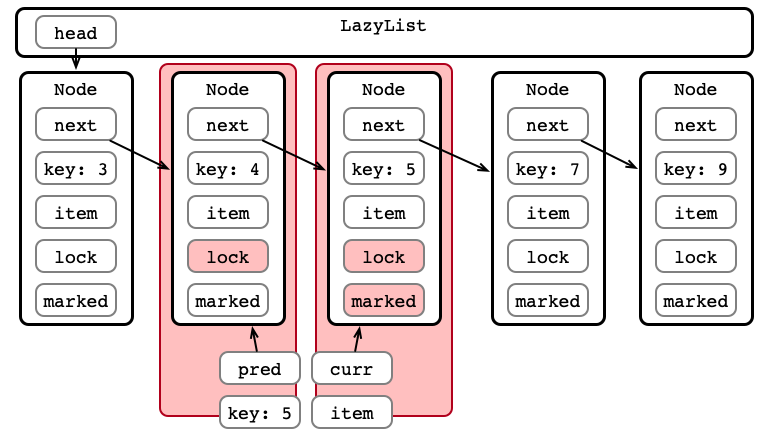
Step 4b: Perform Physical Removal
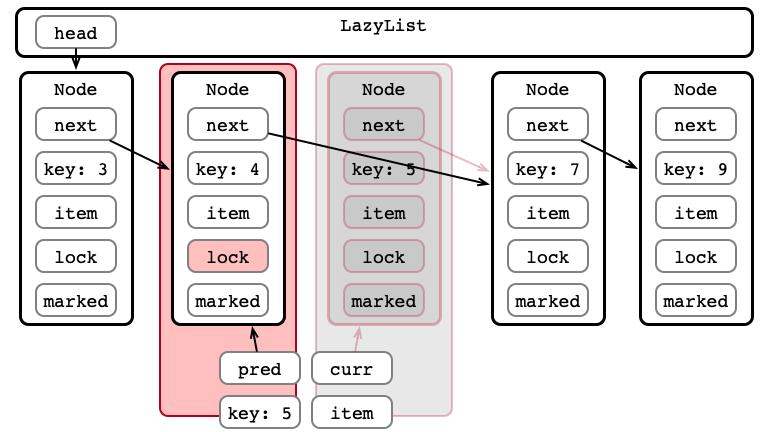
Step 5: Release Locks and Done!
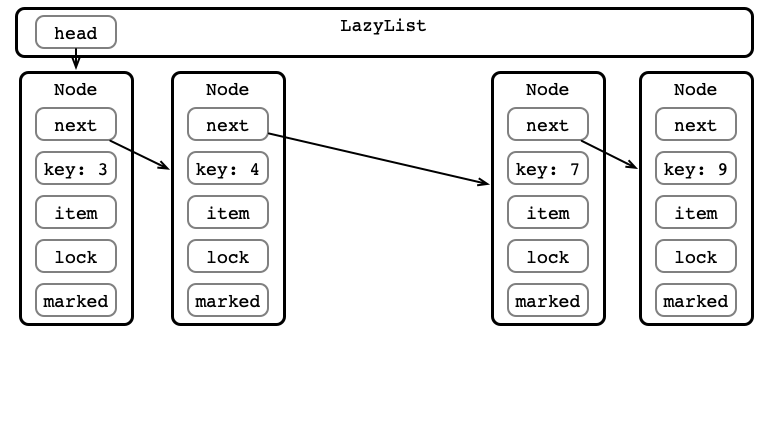
A Node in Code
private class Node {
T item;
int key;
Node next;
Lock lock;
volatile boolean marked;
public Node (int key) {
this.item = null;
this.key = key;
this.next = null;
this.lock = new ReentrantLock();
this.marked = false;
}
public Node (T item) {
this.item = item;
this.key = item.hashCode();
this.next = null;
this.lock = new ReentrantLock();
}
public void lock () {
lock.lock();
}
public void unlock () {
lock.unlock();
}
}
Validation, Simplified
private boolean validate (Node pred, Node curr) {
return !pred.marked && !curr.marked && pred.next == curr;
}
Improvements?
- Limited locking as in optimistic synchronization
- Simpler validation
- faster—no list traversal
- more likely to succeed?
- Logical removal easier to reason about
- linearization point at logical removal line
-
contains()no longer acquires locks- often most frequent operation
- now it is wait-free!
Wait-free Containment
public boolean contains (T item) {
int key = item.hashCode();
Node curr = head;
while (curr.key < key) {
curr = curr.next;
}
return curr.key == key && !curr.marked;
}
Testing Performance!
Lazy Appraisal
Advantages:
- Less locking than fine-grained
- More opportunities for parallelism than coarse-grained
- Simpler validataion than optimistic
- Wait-free
containsmethod
Disadvantages:
- Validation could still fail (though maybe less likely)
- Not starvation-free
- even if locks are starvation-free
-
addandremovestill blocking
What’s next
Can we make all of the operations wait-free?
- A concurrent list without locks?
As Before
To get correctness without locks we need atomics!
AtomicMarkableReference<T>- Stores
- a reference to a
T - a boolean
marked
- a reference to a
- Atomic operations
boolean compareAndSet(T expectedRef, T newRef, boolean expectedMark, boolean newMark)T get(boolean[] marked)T getReference()boolean isMarked()
Nonblocking List Idea
Similar to LazyList
- use
AtomicMarkableReferenceto mark and modify references simultaneously - modifications done by
LazyListcan be done atomically! -
addandremoveare lock-free -
containsis wait-free (hence also lock-free)